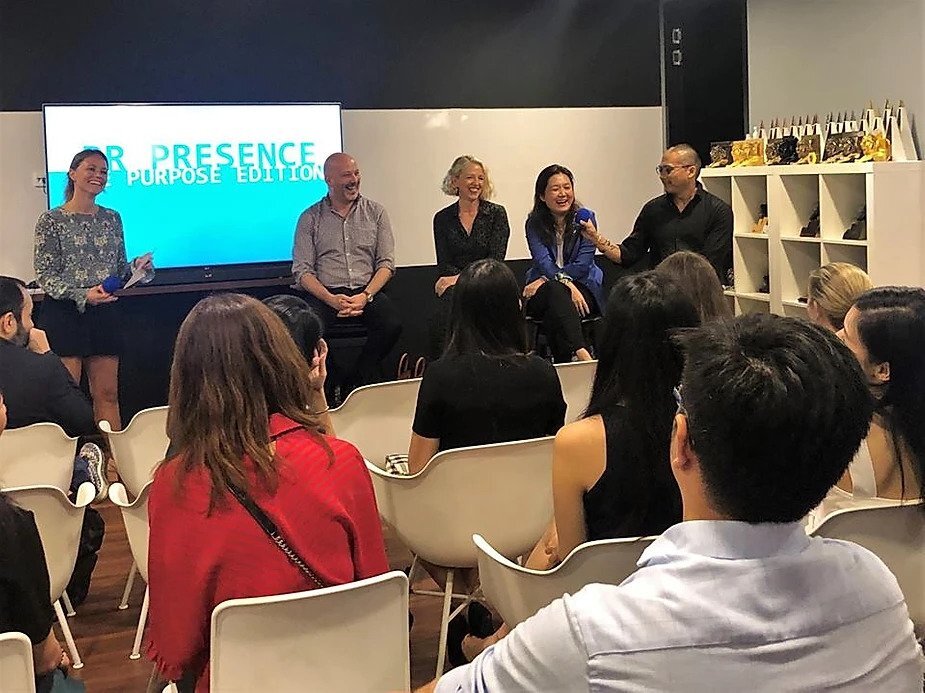A few weeks back we had our quarterly PR Presence event, hosted in the funky China Town offices of Mullenlowe salt, and heard from an experienced panel of speakers on the topic of Purpose. For those that didn’t make it, I wanted to share some of the interesting discussions from the night!
First of all, what is Purpose in this context?
Firstly, CSR is not the same as purpose, which is a common misconception.
Purpose is what your organization stands for. It’s not about one-off stunts or charity led campaigns. It’s about business. True brand purpose can create ‘good business’ - as well as benefiting stakeholders like the community and customers, it brings strategic value, from growing profits and differentiating you from the competition to attracting and motivating the best people.
Why is Purpose important?
As a business you want to benefit a wide range of stakeholders as well as being profitable, and your purpose will directly impact this. Consumers, shareholders and employers are inspired by an authentic brand purpose and strong leaders who are honest and transparent. Public opinion is hugely important to brand value, so your company should be aiming to do well by doing good. As technology has allowed us to access more information, people will find out if you’re dishonest about your purpose, and that can have really serious implications for your business.
Has it become more important from an employer focus too?
Absolutely! Employees want to see more honesty, and if you want to attract and retain employees, anything that can differentiate you is a big plus - a strong purpose is key to this. It’s not just about stating your purpose on your branding, but really taking time to cultivate the purpose internally and externally so it’s embedded in your culture.
How do I go about building a strong purpose?
If clients want to define their purpose and don’t know where to start, ask them what they believe in and what their business goals are. Their purpose will combine these two areas - you shouldn’t need to separate brand purpose and company purpose. For instance, Lifebuoy’s campaign around hand-washing works because they are a soap brand, and Essilor’s purpose to eradicate poor vision makes sense as an optics company. From there, you can go about gaining stakeholder buy-in. Your company will need to be prepared to “live” the purpose, it can’t all come down to comms.
What can go wrong with communicating your purpose?
Many brands continue to view purpose as a tactic, a single campaign or a PR exercise and as a result, run the risk of experiencing the pitfalls of ‘purposewash’.
MullenLowe salt categorizes purpose into 2 camps: Glass Purpose and Steel Purpose. Glass Purpose could be saying one thing, but doing another, or only investing in it short term, say with a one off campaign. A steel purpose on the other hand takes time and investment, and a long-term commitment to taking your consumers on a journey with you, educating them along the way.
The panelists discussed the recent Gillette campaign and whether it would be a “glass” or “steel” purpose example - the difference will show in whether Gillette takes their customers on an educational journey or leaves this as a one-off campaign.
Another pitfall comes up when brands try too hard. Consumers are savvy and know when something is inauthentic.
A final thought as we closed the session was that ultimately you’ll never be able to please everyone, so sometimes it’s important to be brave and accept that whilst you’ll have some failures, you can learn from them and move on.
Thanks again to our panelists Suzy Goulding, Euan Wilmshurst, Paul Katimbang and Siew Ting Foo, this blog is a very condensed version of their thoughts and discussions so I hope we’ve done them justice! If this is a topic you want to find out more about, feel free to reach out and I can connect you with the panelists.
P.S. Our next event is coming up in July - stay tuned for when we release new tickets.
#purpose #pr #business #brand #PRPresence #event
.jpg)